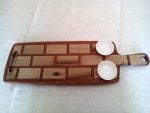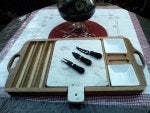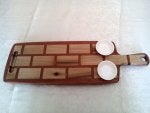Hi all. I am about to take the plunge and start working on a project. I am hoping to get some guidance on making a cutting board/serving tray. Im thinking if i can make these, i will be able to fishish them with some pyrography artwork in one of the corners/edges to give it a real original look and blend a handmade piece of a cutting board with some creative art. I have been reading through a lot of helpful posts here on the forum that have helped me get some info on what I want to do but i have a few questions before I proceed.
All of my current tools are from my grandfathers old collection. I have a table belt and disc sander, random orbital sander, circular saw, and a variety of hand tools. What is the 1 power tool that i would most need for this type of project?
Table saw? Can i get by with just my circular saw?
Planer? Is this just nice to have or will this be necessary?
Both? I have a small budhet to add one of these if necessary. But was hoping to work with what i have as much as possible to learn beofre spending money on more tools.
Also, where does eveeyone source their woods? Is there a good online store or do most people find somewhere local. Im in New Hampshire so i dont think it should be too difficlut to find someone local but i wasnt sure if there was a perferred online shop.
Thanks in advance.
Sent from my LG-H932 using Tapatalk
All of my current tools are from my grandfathers old collection. I have a table belt and disc sander, random orbital sander, circular saw, and a variety of hand tools. What is the 1 power tool that i would most need for this type of project?
Table saw? Can i get by with just my circular saw?
Planer? Is this just nice to have or will this be necessary?
Both? I have a small budhet to add one of these if necessary. But was hoping to work with what i have as much as possible to learn beofre spending money on more tools.
Also, where does eveeyone source their woods? Is there a good online store or do most people find somewhere local. Im in New Hampshire so i dont think it should be too difficlut to find someone local but i wasnt sure if there was a perferred online shop.
Thanks in advance.
Sent from my LG-H932 using Tapatalk





























